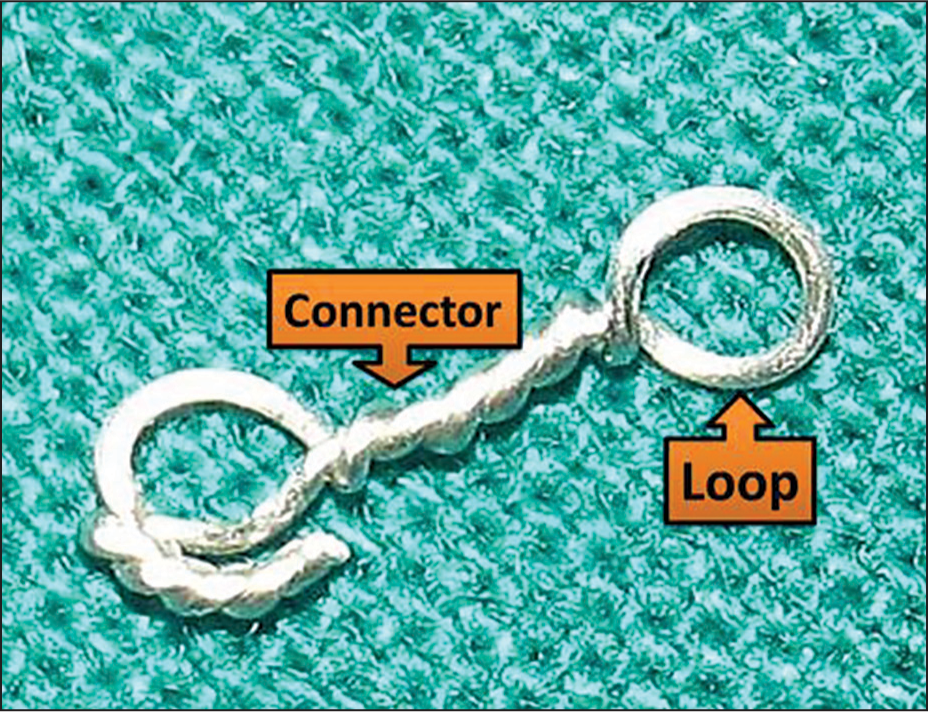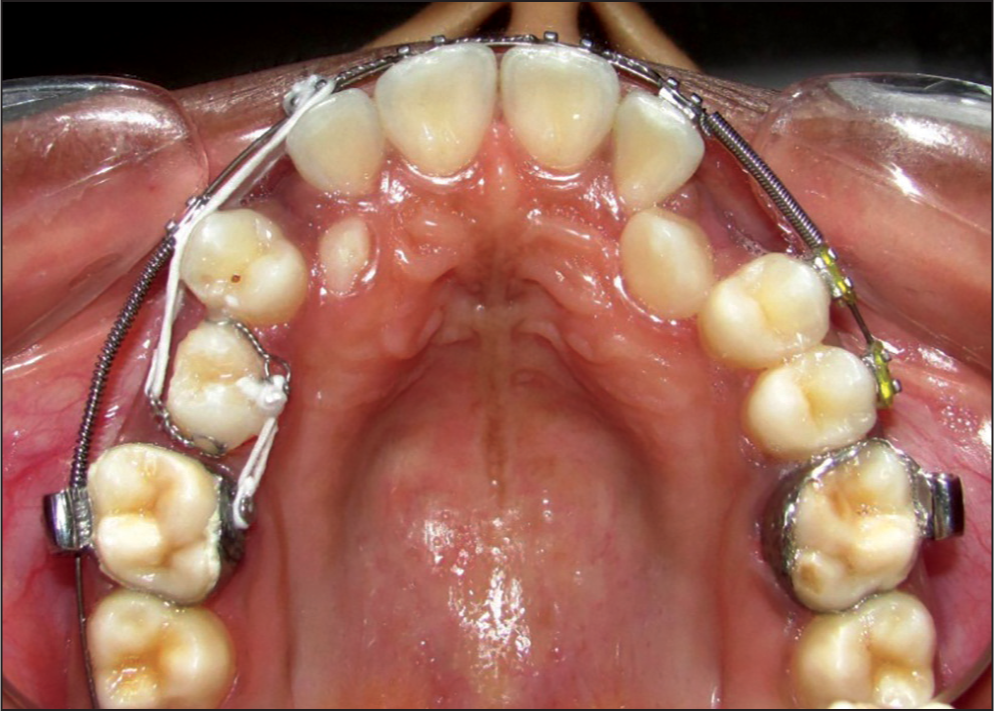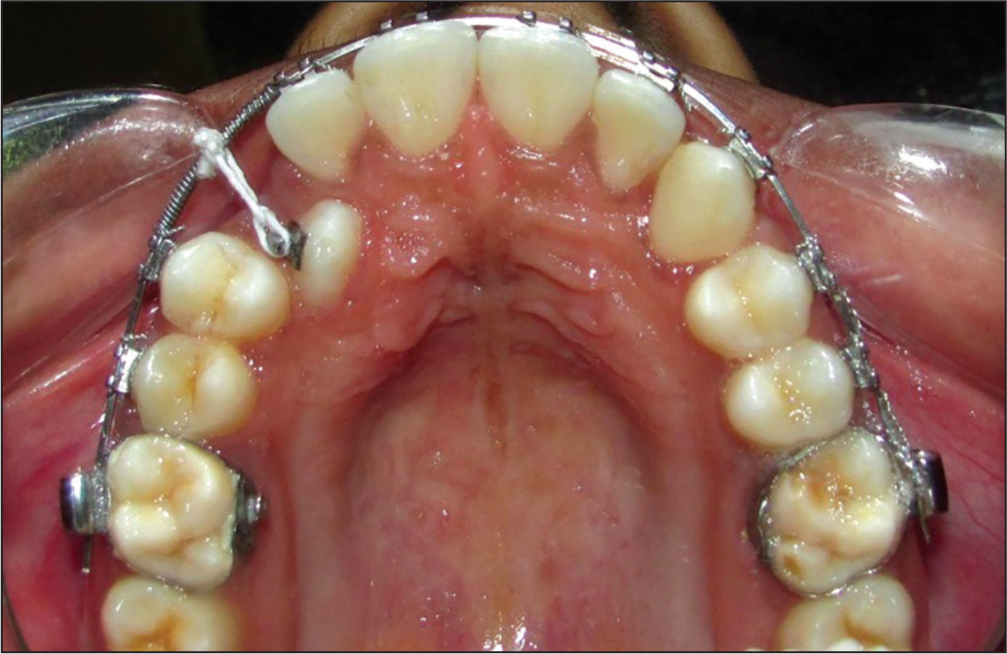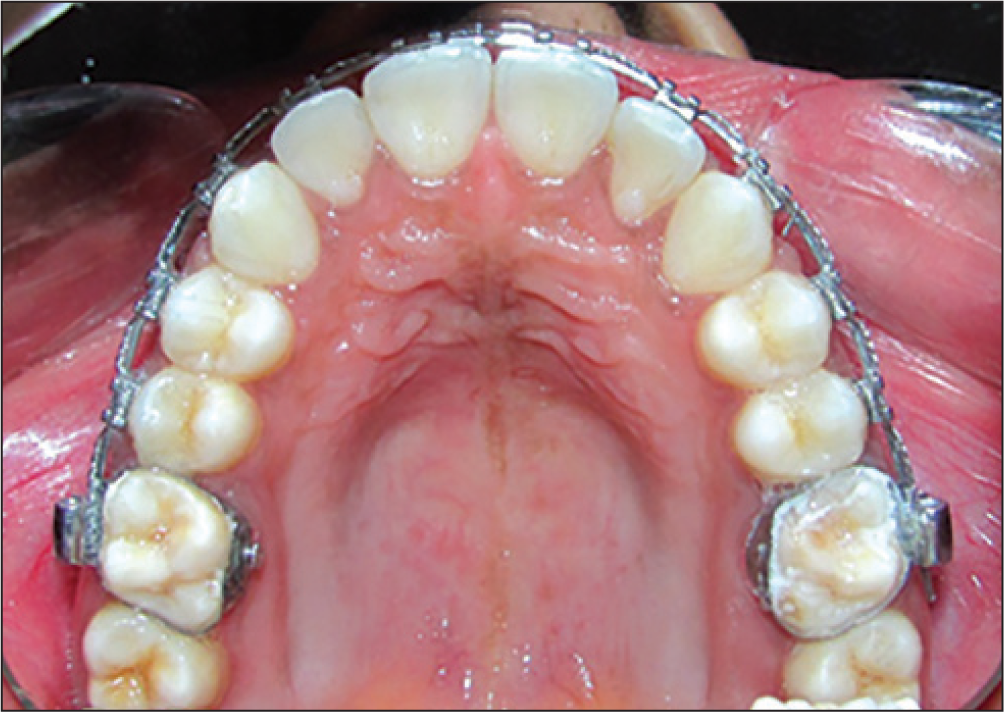Translate this page into:
Double-loop de-rotator
Address for correspondence: Dr. Surendra Lodha, 8A-26, Umrao Dental Care and Orthodontic Center, R.C. Vyas Colony, Bhilwara - 311 001, Rajasthan, India. E-mail: drsurendraalodha@gmail.com
This article was originally published by Wolters Kluwer and was migrated to Scientific Scholar after the change of Publisher.
Abstract
Rotation of a tooth means labial and lingual movements of a tooth around its long axis. It is most evident when viewed from an occlusal perspective. This article describes a simple and economical technique to de-rotate a severely rotated tooth.
Keywords
Couple force
de-rotation
rotation
INTRODUCTION
Rotation of a tooth means labial and lingual movements of a tooth around its long axis.[1] It is most evident when viewed from an occlusal perspective [Figure 1].

- Rotated tooth (>90°)
The only force system that can produce pure rotation (a moment with no net force) is a couple, which is two equal and opposite and parallel forces, but non-collinear.[1]
De-rotation of a tooth is necessary for:
Orthodontic leveling and alignment.
Prosthodontics and restorative purposes.
In cases of severe rotations (>90°) it is very difficult to bond attachments for proper application of couple forces due to inaccessibility to surfaces or size of attachments. In such cases, multiple repositioning of bonded attachments will be required during de-rotation of tooth.
This article describes a simple and economical technique to de-rotate a severely rotated tooth to create space for palatally impacted canine.
FABRICATION OF DOUBLE-LOOP DE-ROTATOR
It is made up of thick ligature wire (0.009˝). It is twisted around explorer to make loops at either end [Figure 2].

- Double-loop derotator
Steps in bonding of de-rotator
Separators were placed to get clearance for bonding [Figure 3].
 Figure 3
Figure 3- Separators for clearance
Loop of de-rotator was bonded on labial and lingual surface of rotated tooth with routine bonding procedure [Figure 4].
 Figure 4
Figure 4- Bonded derotator and application of couple force
Connector of de-rotator is contoured on the proximal surface.
Couple force system was applied to tooth with elastic thread/ E-chain on other loop of de-rotator [Figures 4 and 5].
 Figure 5
Figure 5- Derotation completed and alignment of impacted canine started
Complete de-rotation of tooth shown in Figure 6.

- Complete alignment of impacted canine
Advantages
Simple and economic technique.
No need of repositioning of attachments.
Limitations
Like any other procedure involving bonding it is technique sensitive and proper moisture control is a must.
Undue heavy forces can lead to debonding of the attachment.
Source of Support:
Nil.
Conflict of Interest:
None declared.






